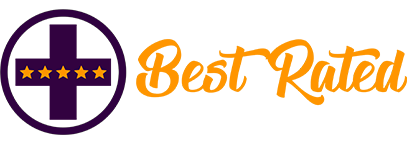The pulse oximeter is a medical device, a painless and easy way to measure the oxygen saturation level or oxygen levels in your blood. Using the device, you can effectively note any changes to the oxygen level in your blood, and how efficiently oxygen is carried from the heart to all parts of the body.
The pulse oximeter is a small device and works like a clip. You can attach it to your earlobe, toe, or fingers, and it is convenient for checking the oxygen level in blood. This device is used in hospitals, clinics, and you can also use one at home. It matters most that you use a premium product as it is a medical device. Please take a look at our list of the best Pulse Oximeters available online. Once the clip-like device is attached to the body, small beams of light pass through the body, reaching the blood and measure the oxygen levels—the changes in the absorption of light measure oxygenated or deoxygenated blood. The process is entirely painless.
The tests are accurate, primarily if you use premium quality products. It is always recommended for hospitals and clinics to use high-quality medical equipment that can provide results with not more than a 2% difference. This means that if your reading is 82, the lowest reading should be 80, and the highest is 84. There are factors to consider, such as the movement of the body, temperature, or even nail polish if you clip the device on the finger.
For a healthy human being, 89% of the blood should be carrying oxygen. This is the prescribed amount of oxygen saturation need to keep yourself healthy. Any level below this is going to cause your body some damage, which might be permanent. The optimum level is 95%. If your blood levels are at 92%, you might have hypoxemia, which is a deficiency of oxygen in your body.
Once you have your results displayed on the device, you can submit your reading to a medical professional for a diagnosis. If the results are lower than required, you must increase it to the required value. You will also need to provide your doctor with regular readings as time passes. These Pulse Oximeters can be used in different hospital settings – outpatient or inpatient. If you need to be continually monitored, a doctor might ask you to use one at home. However, do not fret; the process is simple:
- Clip the device on to your finger, earlobe, or toe. You might feel a slight pressure applied from the clip, but it is not painful. Make sure you are not wearing nail polish while using the device.
- Keep the probe on your finger until the monitoring is completed. Most devices beep once the process is complete.
- The results will be displayed on the top of the device. You can unclip it and provide the results to your doctor.
The device is risk-free, and some offer immediate results while checking your blood oxygen levels. These are handy devices for the elderly and people who are recovering from surgery. Make sure you purchase the right device and not lower quality medical equipment.

Dr. David Taylor is a medical professional and an avid blogger. He holds an M.D. from Drexel University & a Ph.D. from Indiana University School of Medicine.
Dr. David loves to utilize technology to improve healthcare and he does it daily through BestRatedDocs.com. He founded the company in 2016 with the vision to make the discoverability of the best healthcare facilities & best products simple and easy. His passion for informatics and using technology to empower healthcare professionals and the patients they serve is unmatched. He regularly blogs about technology, health IT, medical products and other healthcare topics at bestrateddocs.com.

